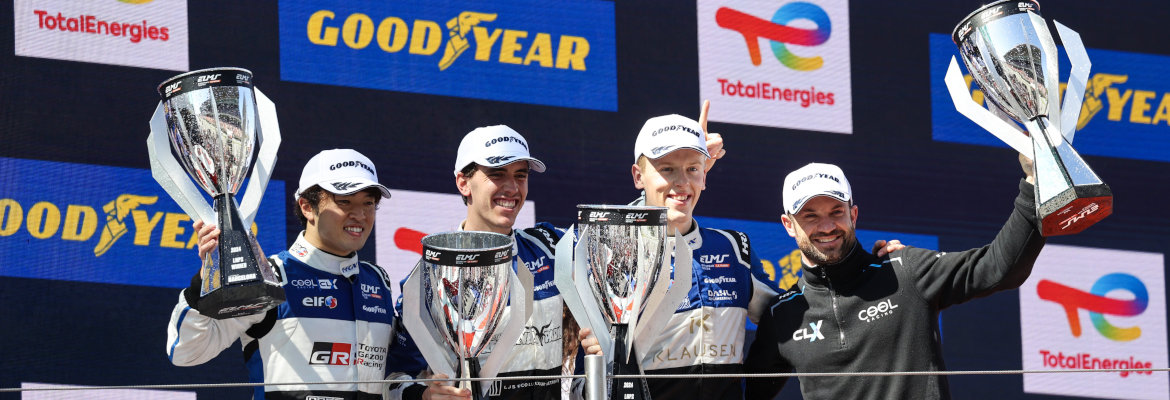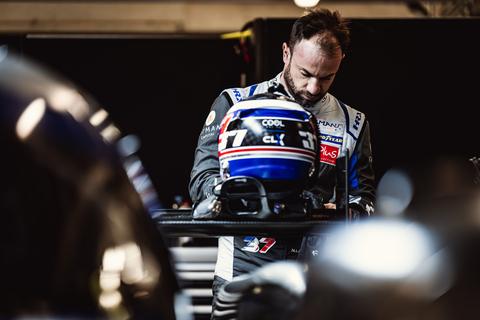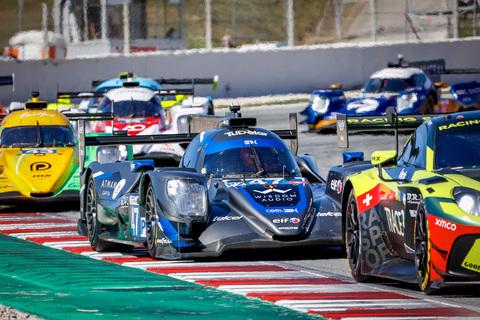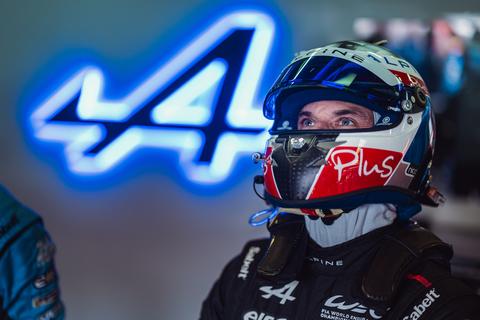13/05/2024 News
Nicolas Lapierre : “In Endurance racing, I like the fact that everyone in the team plays a decisive role in the final outcome”

Paris, May 13th 2024 - Nicolas Pierre has enjoyed a successful career in Endurance racing, spending the majority of his fifteen years in the sport with TotalEnergies-backed teams, for which he is one of the most loyal standard bearers. Ahead of round three of the FIA World Endurance Championship at Spa-Francorchamps, the Alpine Endurance Team driver and Team Principal of COOL Racing, his own outfit, talked to us about his love of the sport.

You have been competing in Endurance racing for more than fifteen years. What do you think about how it has changed?
Seeing all these manufacturers return to the championship after having abandoned it for a while is very satisfying and it’s a great pleasure to be involved. All the more so as we’re talking about some highly prestigious manufacturers. The cars are very nice to look at from the outside and they’re very enjoyable to drive when sat behind the wheel. When you’re competing, you’re always up against several manufacturers and great cars driven by top-level drivers, so it’s really enjoyable and I say that as a fan of Endurance racing.
How do explain the sport’s renewed popularity?
The new regulations have enabled manufacturers to develop cars with a hybrid system, with slightly more controlled costs. The regulations have been very intelligently designed and that in itself is appealing. I think that explains the enthusiasm of the manufacturers, who see it not only as an exciting form of racing, held in a prestigious setting with the FIA world championship and the 24 Hours of Le Mans, but also the perfect laboratory for developing and testing new technologies. I also think that the more manufacturers there are, the more attractive it becomes, so there is something of a snowball effect and that is how we have ended up with twenty-odd Hypercars entered at Le Mans, which is fairly incredible.
You describe yourself as a fan of Endurance racing. What do you like about this category?
What I like more than anything is that it is about sharing, the fact that there are several drivers who contribute to the car’s result and having an entire team involved, who play a decisive role too. During a 24-hour endurance race, there are lot of changes: tyres, strategy and sometimes parts, so everyone in the team really has a very important role. Team spirit and togetherness is absolutely vital. This type of racing suits me best. I was lucky enough to compete in single-seater racing and I really enjoyed the racing side of things, but outside of the car, it’s true that it was a bit frustrating for me because it was really individualistic, everyone up against each other. I feel more at home with the approach in Endurance racing.
You spent last season developing the Alpine A424. Is this behind-the-scenes work an aspect of the sport that you enjoy?
Definitely. In fact, it’s one of my favourite periods. I have done it for several manufacturers and it’s something I find exciting. I love the technical side of things, so I really enjoy the period where you review several parts and different philosophies, to try and get the best out of the car. It’s also a special time shared with various members of the team, whether that’s the designers of the car, the people that produce it, the guys assembling or the ones in charge of running it. You really get an overall view of the entire project.

What is the main difficulty when you switch from single-seater to Endurance racing like Mick Schumacher, your team-mate, and how do you think he is doing thus far?
It’s always tricky because ultimately, the adaptation period is very short. It’s then a question of desire, determination and an ability to change philosophy and approach. Mick was smart enough to make the switch very quickly when he joined the team, at the first tests in Jerez last year. From the outset, he understood that his team-mates were there to help him, not to beat him. He was immediately very keen to get advice to try and learn as quickly as possible. He has therefore managed to make the transition pretty quickly and in spectacular fashion because in the first two races, he drove really well. He has been able to adapt not only to the car, which is rather different to what he has experienced up to now, but also to the traffic and race management. So it’s great to have him in the team. He’s made a brilliant start in Endurance, and soon he’ll be taking on Le Mans for the first time and that will also be a big challenge. He’ll need to get into the swing of things very quickly but I’m confident that he’ll manage to do just that.
What is the most difficult aspect when you compete in your first 24 Hours of Le Mans?
Well, first of all, the track is not permanent and you can never practice on it. Obviously, he’ll have done some work on the simulator beforehand. But it’s not easy, because the racing surface changes a lot during the course of the week. 80% of the track is on trunk roads so it’s not rubbered in and tends to be pretty dirty. For the first few free practice sessions, the track will be very slippery and then it will improve gradually over the course of the week. When you have never raced here before, it can be tricky to judge the changing grip conditions. The track is also very long, two to three times longer than a standard circuit. In the end, you don't do that many laps because you also share track time with your team-mates, so you can come to the start line on Saturday having completed relatively few laps. So for all those reasons, a first outing at Le Mans is always tricky.

Where are you now with the Alpine A424 and what are the objectives this season?
It’s difficult to make an overall assessment for the time being. Our début in Qatar went pretty well because one of the cars managed to finish in the points, and it certainly could have been both. Imola was a lot more difficult because it’s a much bumpier track and we hadn’t had the chance to test there beforehand. Thus far, we’ve raced on two very different tracks. After Spa, we’ll have a better overall view of where we are on a slightly more conventional track. We still have a plenty of things to improve but we’re pretty much where we expected to be as regards timing. It’s difficult to say what our expectations are in terms of results. At the moment, we're just taking it race by race, approaching things with humility and respect. Obviously, we have set ourselves targets but they are more for next year, when we’ll be able to assess our performances, strengths and weaknesses with slightly more perspective. We’ll have had the chance to race at all the tracks by then. For now, we are still spending a bit of time adapting at each event.
You are also Team Principal at COOL Racing, your own Endurance team, who are also backed by ELF. How do you manage to combine the two roles?
My schedule is pretty busy, to be honest! It’s intense, but I try to get the balance right and avoid mixing everything up. The two roles are different, but I love them both. I feel both projects are really important. With the Alpine project, it’s the culmination of several years of work to have a car in the elite class, which in due course will be capable of fighting at the front. The other project has been about creating a team. It is now in its fourth year, and we won our first race this year in the ELMS. Things are going pretty well. I enjoy my role as team manager as much as driving for Alpine. I like managing people, seeing the young drivers improve and being able to support them as much as possible by sharing and using my experience, making my team understand what the drivers expect and what we need to do in order to help them to perform better.

